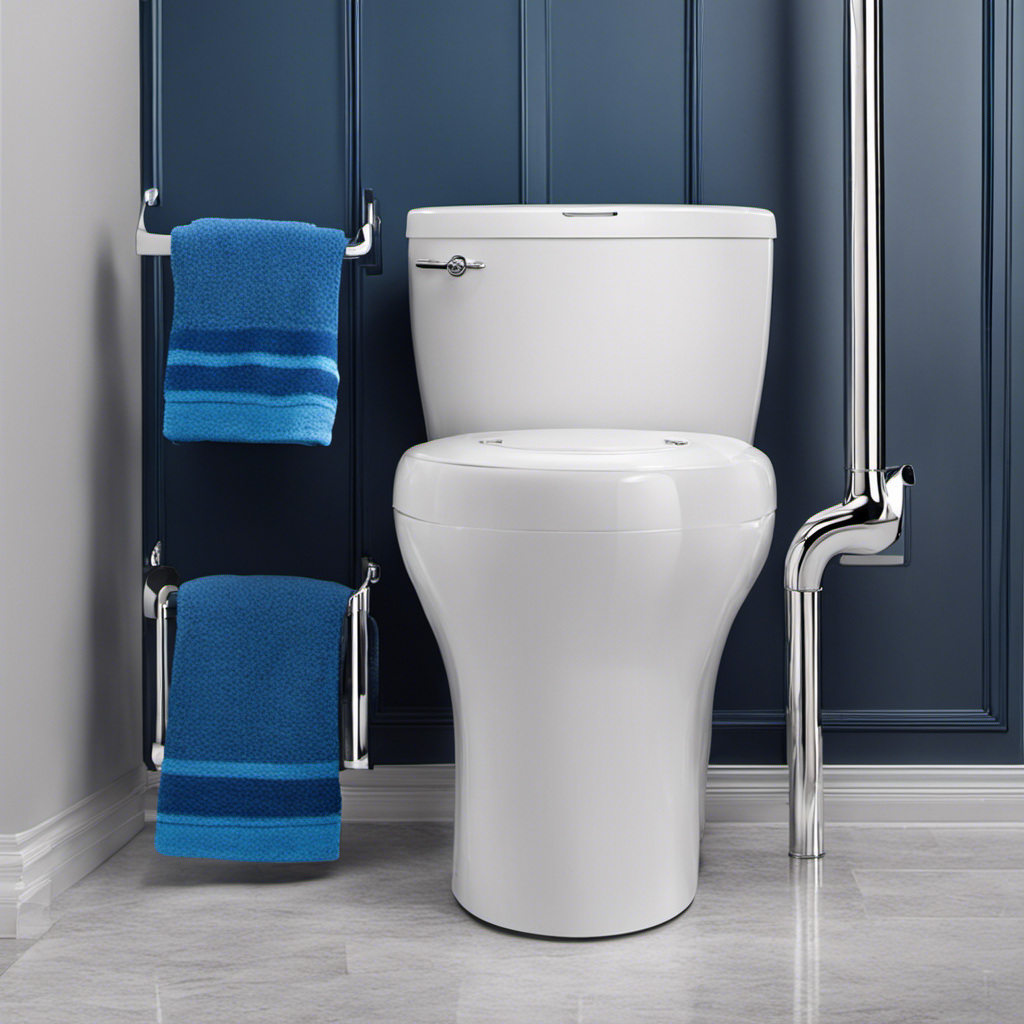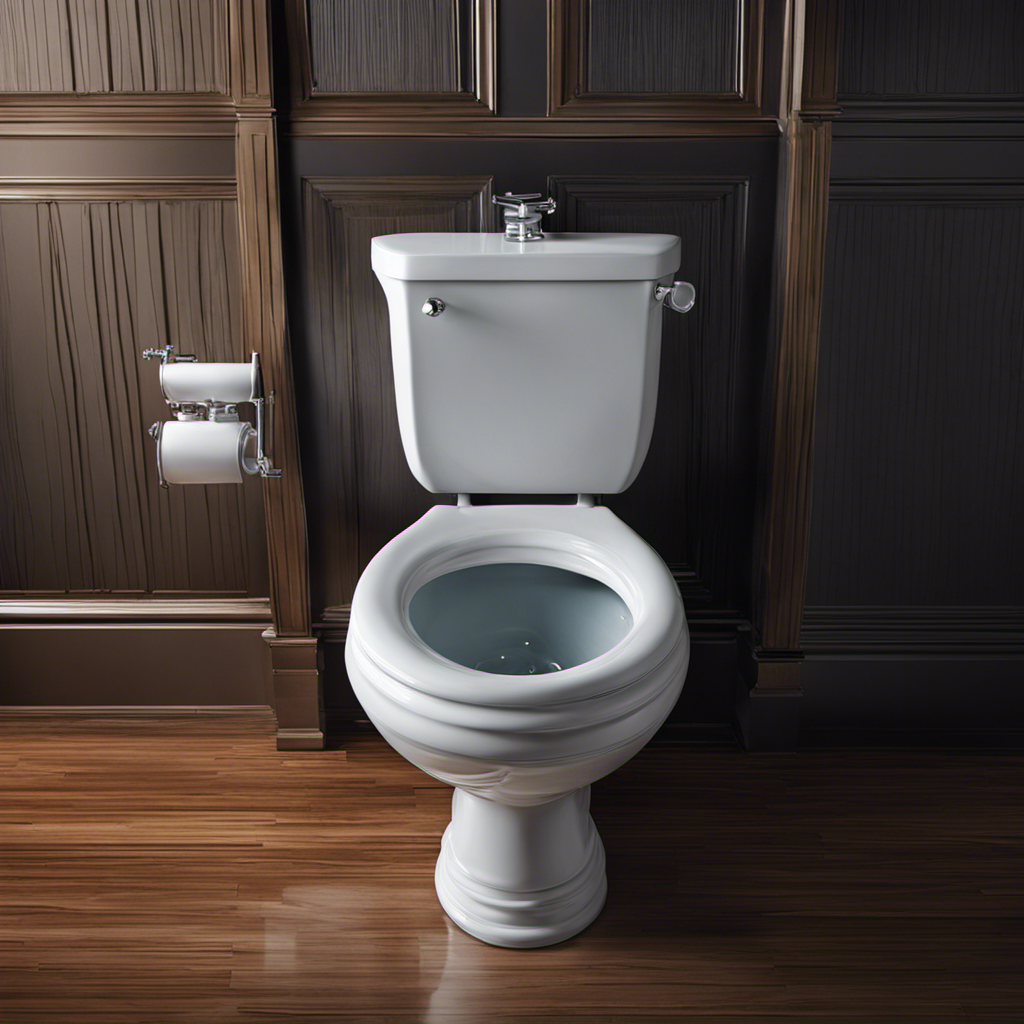Ever pondered whether flushing hair down the shower drain is acceptable? We have the solution for you.
Turns out, flushing hair down the drain might not be as harmless as it seems. In fact, it can lead to some serious plumbing issues.
In this article, we’ll explore the potential risks of flushing hair, how it can cause clogs, and provide you with some maintenance tips to prevent those pesky blockages.
So, let’s dive in and learn how to take better care of our drains.

Key Takeaways
- Flushing hair down the shower drain can lead to serious plumbing issues such as clogs and blockages.
- Regularly cleaning drains and using drain covers is recommended to prevent hair from entering pipes.
- Proper hair disposal is important to avoid plumbing repairs, and eco-friendly options include compost bins or donating to wig-making organizations.
- Regular plumbing maintenance, including cleaning out drainpipes, is crucial to prevent plumbing problems caused by hair.
The Potential Risks of Flushing Hair
When it comes to flushing hair down the shower drain, we need to be aware of the potential risks involved. Not only does it have a negative impact on the environment, but it can also lead to serious drainage problems if not properly addressed.
Flushing hair down the drain contributes to clogs and blockages, which can result in slow drainage or even complete backups. This not only causes inconvenience but also requires costly repairs.
Regular drain maintenance is crucial to prevent these issues. By regularly cleaning and maintaining the drains, we can ensure that hair and other debris are effectively removed, minimizing the risk of clogs and blockages.
Understanding how drains work and the importance of proper maintenance will help us avoid potential problems in the future.

Understanding How Drains Work
To understand how drains work, let’s break it down into simple terms. Drainage systems are designed to remove wastewater from our homes and transport it to the sewer or septic tank. The process involves a network of pipes and fittings, with gravity playing a crucial role in moving the water downward. To help visualize this, let’s consider a typical drainage system:
| Component | Function |
|---|---|
| Pipes | Carry wastewater away from fixtures towards the main line |
| Traps | Prevent sewer gases from entering the living space |
| Ventilation | Allows air to enter the system for proper drainage |
Understanding the components of a drainage system can help us identify and prevent common causes of drain clogs. By maintaining clean pipes, ensuring proper trap function, and addressing ventilation issues, we can minimize the risk of blockages. Now, let’s delve into the impact of hair on plumbing systems.
Hair and Its Impact on Plumbing Systems
Hair can cause significant issues in plumbing systems. When it comes to hair maintenance, it’s important to understand the impact that hair can have on your plumbing.
Hair care products, such as shampoos, conditioners, and styling products, can contribute to the problem by leaving behind residue and buildup in your pipes. Over time, this can lead to clogs and blockages, causing water to back up and potentially damage your plumbing system.

To prevent these issues, it’s recommended to regularly clean your drains and invest in a drain cover to catch hair before it goes down the drain. Additionally, consider using hair traps or filters in your shower to further prevent hair from entering your plumbing system.
The Common Misconception About Flushing Hair
Many people mistakenly believe that it’s safe to flush hair down the shower drain, but this is a common misconception that can lead to plumbing issues.
Hair has a tendency to accumulate and clog pipes, causing blockages and backups.
It’s important to dispose of hair properly to avoid costly plumbing repairs and maintain the efficiency of your plumbing system.

Hair Clogs Plumbing Pipes
We often mistakenly believe that flushing hair down the shower is harmless, but it can actually lead to clogs in our plumbing pipes. When hair goes down the drain, it can accumulate and form a blockage over time. This can result in slow drainage or even complete pipe blockage, causing potential consequences such as water backup, unpleasant odors, and expensive repairs.
To avoid hair clogs in plumbing pipes, it’s important to take preventive measures. Installing a drain strainer or hair catcher in the shower can help catch loose hair before it goes down the drain. Regularly cleaning the drain strainer and removing any trapped hair is also crucial.
Additionally, it’s advisable to schedule regular professional plumbing maintenance to ensure the health of your pipes and prevent any potential clogs.
Proper Hair Disposal Methods
By properly disposing of hair, we can avoid the common misconception of flushing it down the shower drain. When it comes to hair care, it’s essential to consider eco-friendly options for hair disposal. Instead of flushing hair, we should collect it and dispose of it in a more responsible way.

One eco-friendly option is to gather the hair and place it in a compost bin or pile. Hair is a rich source of nitrogen, which can help with composting.
Another option is to collect the hair and donate it to organizations that make wigs for cancer patients. These organizations can use the hair to create natural-looking wigs, providing support and confidence to those in need.
By choosing these eco-friendly options, we can minimize our impact on the environment and contribute to a more sustainable future.
Now, let’s delve into why hair can cause clogs in drains.
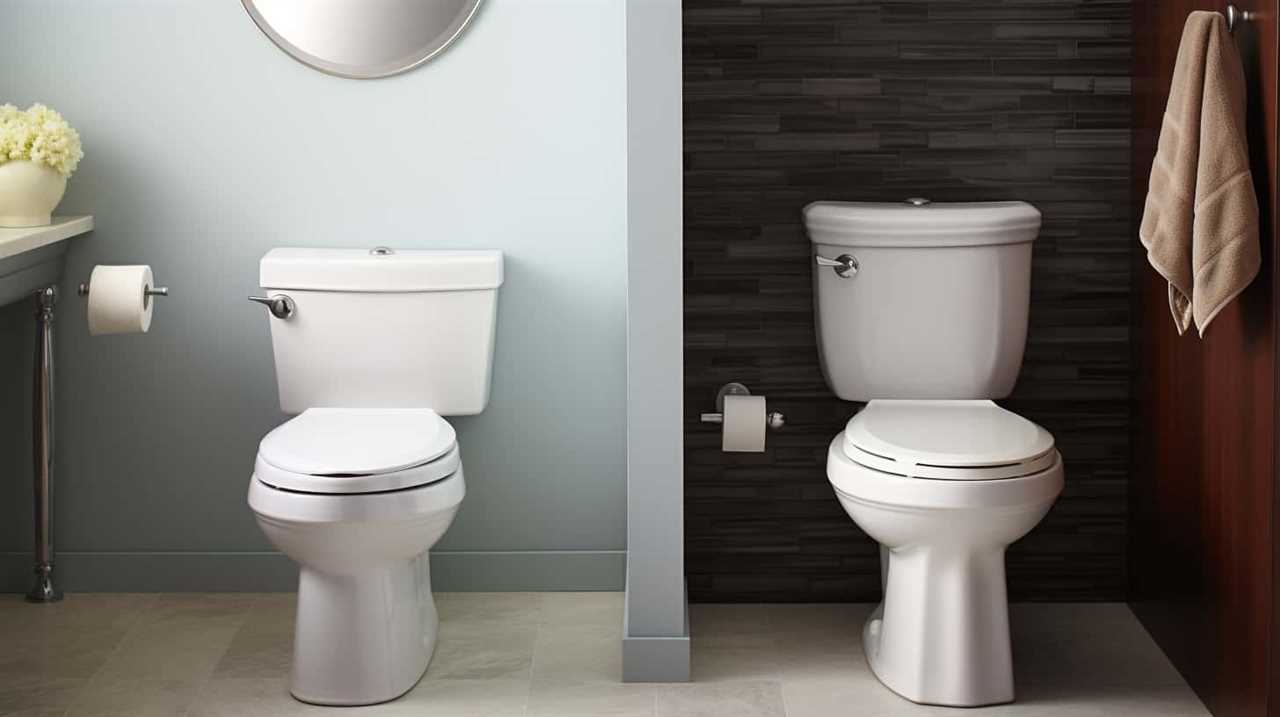
Why Hair Can Cause Clogs in Drains
Hair can be a common culprit for clogged drains and plumbing problems. When hair goes down the shower drain, it can easily get tangled with other debris, such as soap scum and grease, forming a stubborn blockage.
Over time, this can lead to slow draining or even complete blockage of the drain, resulting in the need for professional plumbing assistance.
Hair and Drain Clogs
Understanding hair types and implementing proper hair care tips are essential for preventing drain clogs. When we shower or wash our hair, loose strands of hair can easily find their way into the drain. Over time, these strands can accumulate and create a blockage in the drainpipe.
Hair has a tendency to tangle and clump together, especially when combined with other substances like soap, shampoo, and conditioner. This can further worsen the clog and make it difficult for water to flow freely through the drains.

As a result, plumbing problems with hair, such as slow draining or complete blockages, may occur.
Now, let’s dive deeper into the specific plumbing problems caused by hair.
Plumbing Problems With Hair
As we continue our discussion on the topic of hair and drain clogs, it becomes evident that the accumulation of hair in the drainpipe can lead to various plumbing problems.
When hair gets caught in the drain, it can create a blockage that restricts the flow of water. Over time, the trapped hair can collect other debris, such as soap scum and dirt, further exacerbating the clog. This can result in slow drainage or even complete blockages, causing water to back up and potentially overflow.

To prevent these plumbing issues, regular plumbing maintenance is crucial. This includes cleaning out the drainpipes to remove any hair buildup. Additionally, proper hair care is essential to minimize the amount of hair that enters the drain.
In the next section, we’ll discuss the importance of proper hair disposal to prevent clogs and maintain a healthy plumbing system.
The Importance of Proper Hair Disposal
When it comes to maintaining a clean and clog-free shower drain, it’s crucial for us to be mindful of the proper disposal of our hair. Not only does improper hair disposal lead to plumbing problems, but it also has a significant environmental impact.
Hair that’s flushed down the shower can end up in water bodies, where it takes a long time to decompose and can harm marine life. Regular drain maintenance is essential to prevent clogs and keep our drains functioning properly. By adopting simple habits like using drain catchers and regularly cleaning them, we can minimize the accumulation of hair in our drains and reduce the need for costly repairs.

Transitioning into the next section, let’s explore some alternatives to flushing hair down the shower.
Alternatives to Flushing Hair Down the Shower
When it comes to disposing of hair, there are safer alternatives to flushing it down the shower drain.
By using a hair catcher or drain strainer, you can prevent hair from clogging your plumbing system.
Another option is to collect the hair and throw it in the trash.
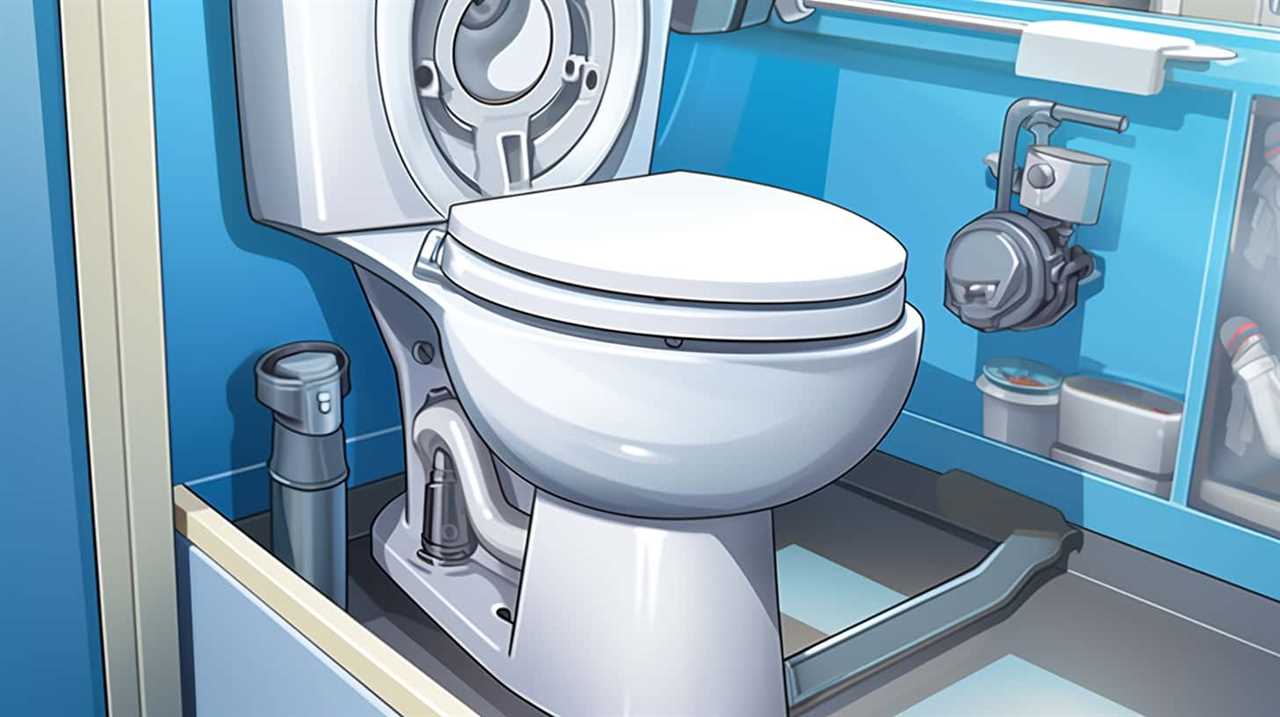
These simple alternatives can help avoid costly plumbing issues and keep your drains clear.
Safer Disposal Methods
To ensure proper disposal of hair, we should consider alternative methods instead of flushing it down the shower drain. Here are some safer disposal methods that can help prevent clogs and keep your plumbing system running smoothly:
- Collect and throw it in the trash: After showering, gather the loose hair and throw it in the trash bin. Use a tissue or paper towel to pick up any stray strands.
- Use a drain strainer or hair catcher: Place a drain strainer or hair catcher over your shower drain to catch any loose hair. Regularly clean and remove the collected hair to prevent blockages.
- Create a DIY hair trap: Make a simple hair trap by placing a piece of nylon stocking or a mesh screen over your drain. This will catch hair and allow water to flow through easily.
- Consider composting: If you have a compost bin, you can collect hair and add it to your compost pile. Hair is rich in nitrogen and can contribute to the nutrient content of your compost.
Preventing Plumbing Clogs
Now, let’s delve into some practical ways we can prevent plumbing clogs caused by flushing hair down the shower drain on a regular basis. By following these simple steps, you can maintain clean drains and avoid the hassle of clogs.
| Preventing Clogs | Maintaining Clean Drains |
|---|---|
| Use a drain cover | Regularly clean drains |
| Install a hair catcher | Avoid pouring grease or oil down the drain |
| Brush your hair before showering | Use a plunger to clear minor clogs |
| Dispose of hair in a trash can | Flush drains with hot water and vinegar solution |
| Schedule professional drain cleaning | Use a drain snake to remove stubborn clogs |
Using a drain cover or hair catcher can effectively prevent clogs by trapping hair before it reaches the drain. Brushing your hair before showering can also minimize the amount of loose hair that goes down the drain. Properly disposing of hair in a trash can is another way to prevent clogs. Regularly cleaning drains and avoiding pouring grease or oil down the drain can also help maintain clean drains. In case of minor clogs, using a plunger or flushing drains with a hot water and vinegar solution can be effective. For stubborn clogs, a drain snake or professional drain cleaning may be necessary. By following these preventive measures, you can keep your drains clog-free and functioning properly.
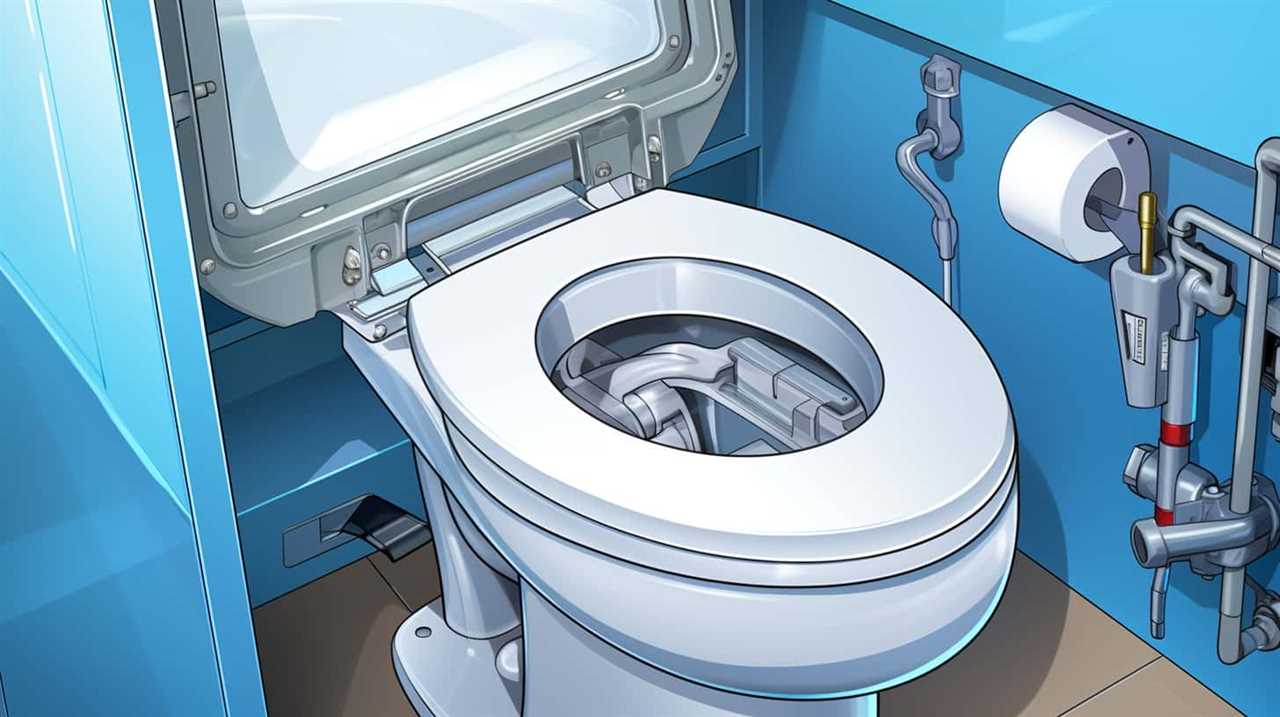
Using Drain Covers to Prevent Hair Clogs
We highly recommend using drain covers to effectively prevent hair clogs in the shower. Here are four reasons why drain covers are beneficial in maintaining a clog-free plumbing system:
- Prevents hair from entering the drain: Drain covers act as a barrier, catching hair before it can go down the drain and cause clogs.
- Easy to install and clean: Using drain strainers is a simple and hassle-free way to prevent hair clogs. They can be easily installed and removed for cleaning.
- Reduces the need for regular drain cleaning: By keeping hair and other debris from entering the drain, drain covers minimize the frequency of clogs and the need for regular drain cleaning.
- Preserves the lifespan of your plumbing system: Regular drain cleaning is essential for maintaining the longevity of your plumbing system. By preventing clogs, drain covers help in preserving the overall health and functionality of your pipes.
Using drain covers is just one aspect of regular maintenance tips for preventing clogs. Now, let’s delve into other strategies to keep your drains running smoothly.
Regular Maintenance Tips for Preventing Clogs
One effective way to prevent clogs and maintain a clog-free plumbing system is through regular maintenance and cleaning. Understanding clog prevention and implementing DIY hair removal methods are essential in keeping your drains clear and functioning properly.
Regularly cleaning your drains is crucial to prevent hair buildup and other debris from causing clogs. You can use a mixture of baking soda and vinegar to flush your drains regularly, as this combination helps break down residue and keeps your pipes clear.

Additionally, using a drain snake or plunger can be effective in removing hair clogs if they do occur. It’s important to be proactive with your maintenance routine to avoid costly and inconvenient plumbing issues in the future.
DIY Remedies for Clearing Hair Clogs
To tackle hair clogs in your shower drain, a simple DIY remedy involves using a wire hanger. Here are a few steps to follow for successful hair removal:
- Straighten out a wire hanger and create a small hook at one end.
- Insert the hooked end into the drain and start fishing for the clump of hair.
- Gently pull out the hair clog, being careful not to push it further down the drain.
- Dispose of the hair in a trash bag or bin.
If you prefer a natural drain cleaner, you can try mixing equal parts baking soda and vinegar. Pour this mixture down the drain and let it sit for about 30 minutes before flushing it with hot water.
When DIY remedies don’t work or if the clog persists, it may be time to call a professional plumber for further assistance.
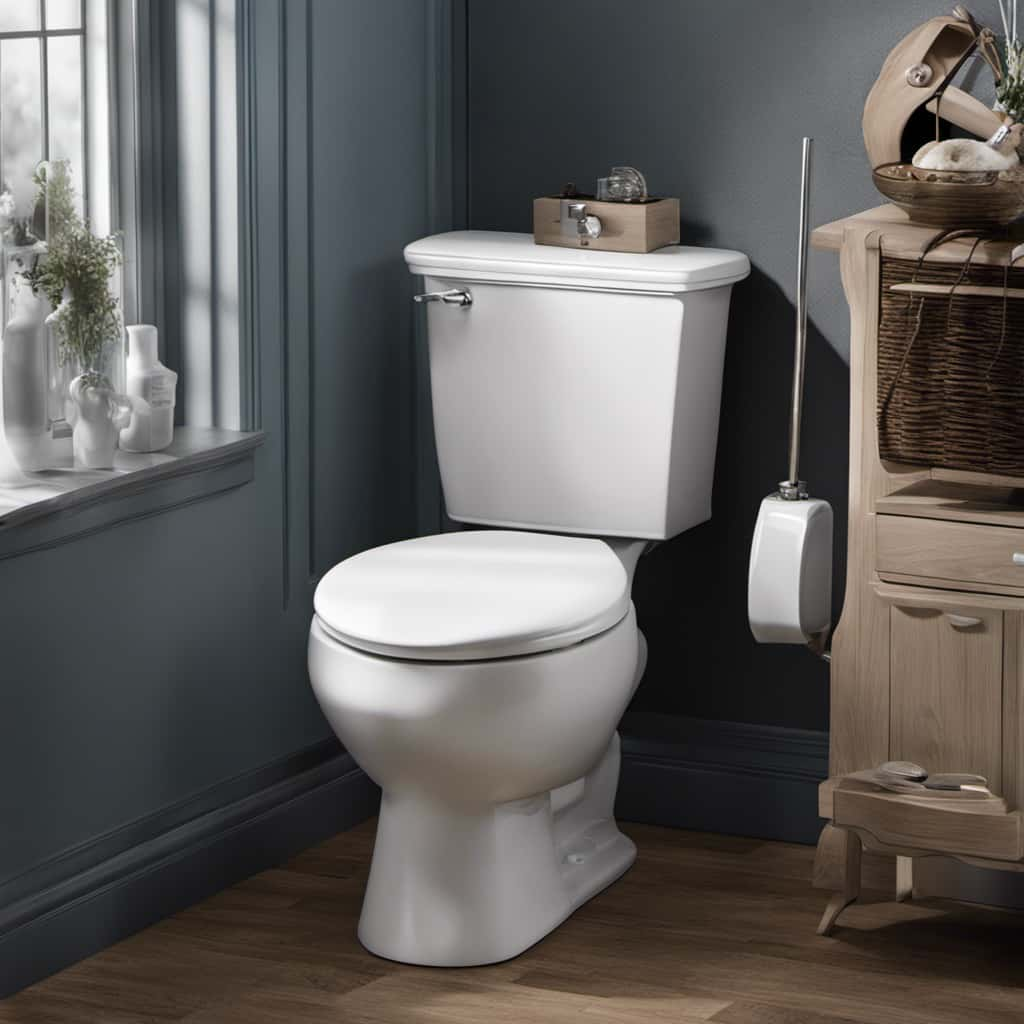
When to Call a Professional Plumber
If the hair clog persists despite DIY remedies, it’s time to call a professional plumber for their expertise and assistance. While it’s always good to try DIY plumbing solutions first, there are certain signs that indicate the need for professional help.
One sign is if the clog is recurring or if multiple drains in your home are affected. This could indicate a more serious issue with your plumbing system that requires professional attention.
Another sign is if you have tried multiple DIY remedies without success. This suggests that the clog may be too stubborn or complex for DIY methods.
Calling a professional plumber ensures that the problem will be properly diagnosed and resolved, saving you time and frustration.

In the next section, we’ll discuss the importance of making informed choices for drain care.
Conclusion: Making Informed Choices for Drain Care
For effective drain care, it’s essential that we make informed choices. By following best practices for drain care, we can prevent clogs and maintain the cleanliness of our pipes. Here are some key considerations to keep in mind:
- Use drain covers: Installing drain covers can prevent hair, soap scum, and other debris from entering the pipes.
- Regular cleaning: Routinely clean your drains using a mixture of baking soda and vinegar or a drain cleaner recommended by professionals.
- Avoid chemical-based products: Harsh chemicals can damage your pipes and harm the environment. Opt for natural drain cleaning solutions instead.
- Be mindful of what goes down the drain: Dispose of waste properly and avoid flushing items that can clog the pipes, such as hair, grease, or sanitary products.
Frequently Asked Questions
What Are the Potential Risks of Flushing Hair Down the Shower?
Flushing hair down the shower can lead to potential clogs and damage to plumbing. It’s important to avoid this practice as it can cause blockages and costly repairs.
How Does Hair Impact Plumbing Systems?
Hair can have a significant impact on drain clogs and plumbing systems. To prevent hair clogs in pipes, regular cleaning and the use of drain covers can help.

What Is the Common Misconception About Flushing Hair?
Common misconceptions about flushing hair down the shower exist, but we caution against it. Hair can clog pipes, leading to costly plumbing issues. It’s best to dispose of hair properly to avoid potential problems.
What Are the Alternatives to Flushing Hair Down the Shower?
Hair removal methods, such as shaving or waxing, are common alternatives to flushing hair down the shower. Proper disposal of hair involves placing it in a trash can or using a hair trap to catch it.
When Should You Call a Professional Plumber?
When to DIY plumbing and when to call a professional plumber? Signs of a plumbing emergency include burst pipes, sewage backups, and no water. Don’t risk it, let the experts handle it.
Conclusion
In conclusion, it’s important to remember that hair shouldn’t be flushed down the shower drain. Despite common misconceptions, hair can cause clogs in plumbing systems and lead to costly repairs.
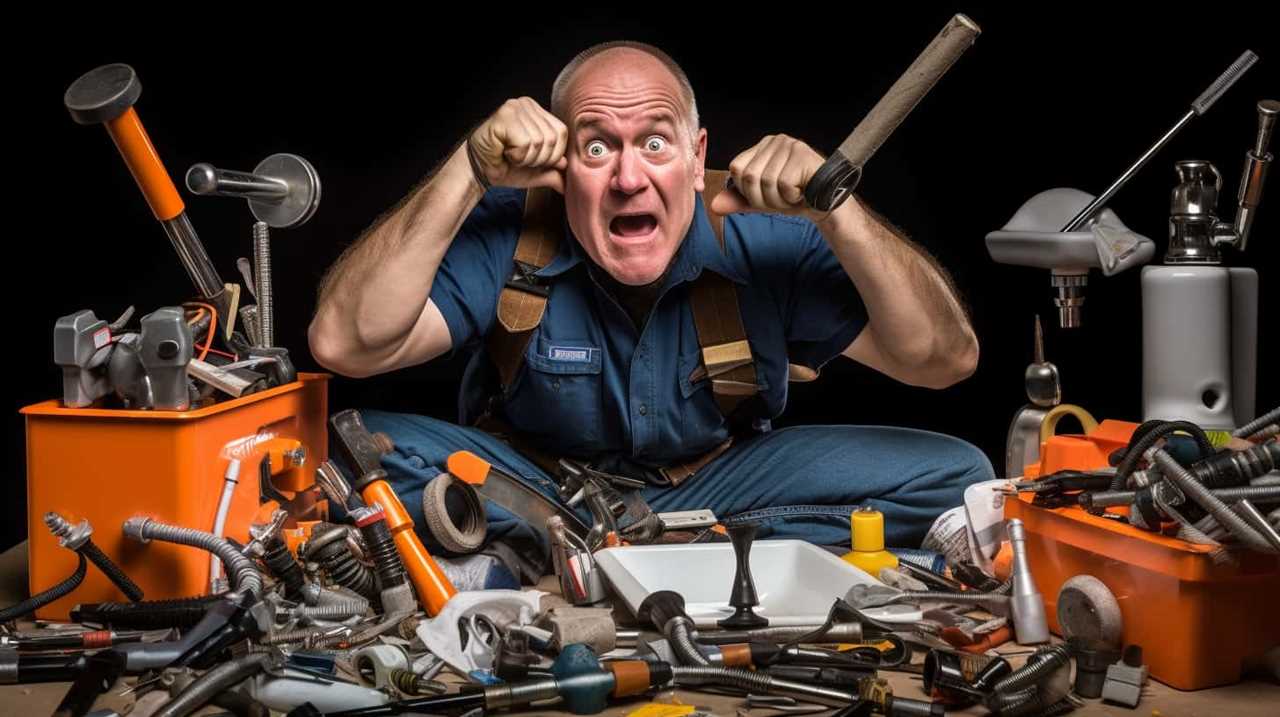
By practicing regular maintenance and using DIY remedies to clear hair clogs, you can prevent these issues. However, if the clog persists or if you’re unsure how to handle it, it’s best to call a professional plumber for assistance.
Remember, an ounce of prevention is worth a pound of cure.




